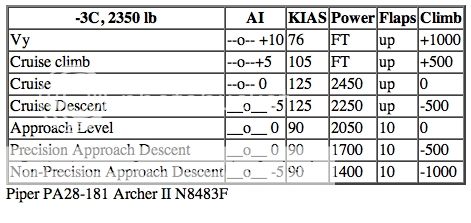N7702Y
Pre-Flight
I'm a dive and drive guy. If I had a 480 or a 430W/530W, then that would be a different deal, but I don't.
I like to be at the MDA, stabilized in the landing configuration at about blue line plus 10 as early as possible. I'll do up to a 1,000 FPM rate of descent to get there.
Only other thing I'd throw out is that it is important to know in advance from practice, for given conditions, what power settings and configurations will give you the desired rate of descent, and then what power settings will hold you at your target airspeed in the landing configuration at MDA. Practice makes perfect.
Jay
I like to be at the MDA, stabilized in the landing configuration at about blue line plus 10 as early as possible. I'll do up to a 1,000 FPM rate of descent to get there.
Only other thing I'd throw out is that it is important to know in advance from practice, for given conditions, what power settings and configurations will give you the desired rate of descent, and then what power settings will hold you at your target airspeed in the landing configuration at MDA. Practice makes perfect.
Jay


